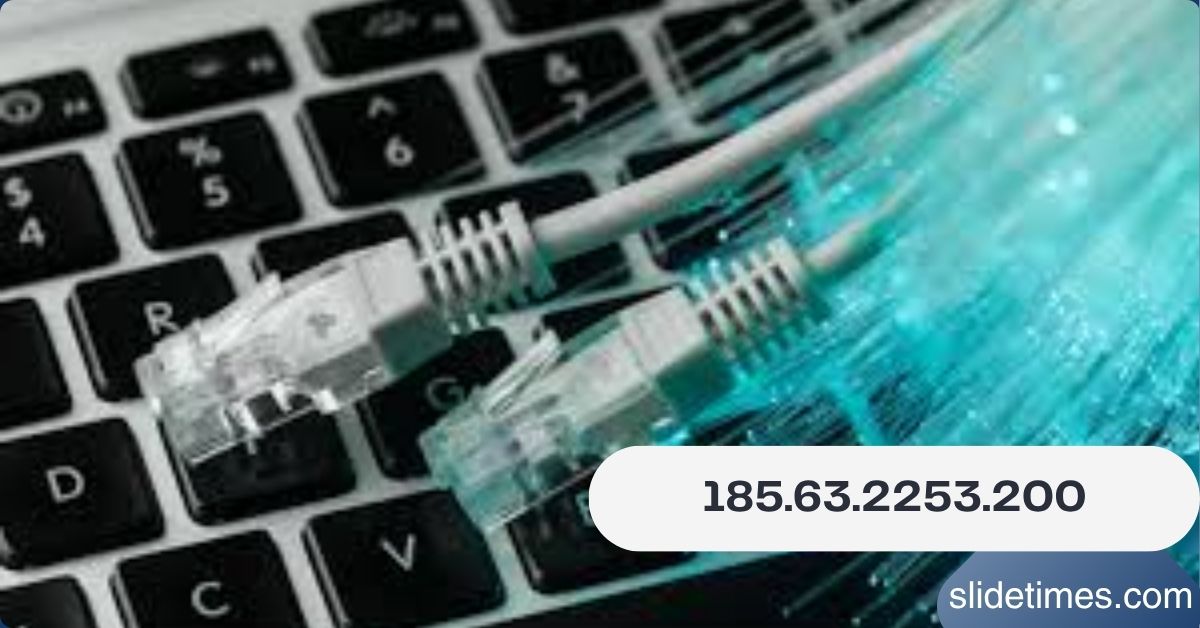This article explores the IP address 185.63.2253.200—what it means, how it works, and why it matters. We will go deeper than simple definitions, offering insights and interpretations that help everyday readers understand its importance in our digital world. The article is structured to serve users from both the US and Indonesia with clear, simple English. It also focuses on optimizing for the keywords 185.63.2253.200 and 185.63 2253.200 for search engines.
What Is 185.63.2253.200?
The term 185.63.2253.200 is an IP address, or at least it appears to be. An IP (Internet Protocol) address is a unique string of numbers assigned to each device on a computer network that uses the Internet Protocol for communication. In everyday terms, it helps the internet know where to send data.
Every website you visit, every email you send, and every app you use on the internet involves IP addresses. They’re like postal addresses for computers.
However, there’s something wrong here. The IP address 185.63.2253.200 includes a segment “2253,” which exceeds the allowed range for IPv4 addresses. Let us explore this further.

Spotting the Number Error
An IPv4 address consists of four octets (numbers) separated by periods, and each number must be between 0 and 255. Therefore, 2253 is not a valid number for an IPv4 address.
Possible Causes:
- Typing Error: Someone may have meant to write 185.63.225.3 or 185.63.253.200.
- Formatting Mistake: It’s possible that the number 2253 should have been split into two different octets.
- Placeholder or Dummy Value: Some developers use invalid IP addresses like this for example purposes.
It’s essential to identify these issues, especially in technical documentation or real-world applications.
Also Read: Noxidpovsimhu: A Complete Guide
Why IP Address Structure Is Important
Understanding the structure of an IP address is crucial because every part has a role to play in network communications.
IPv4 vs IPv6:
- IPv4: Uses four sets of numbers (each between 0 and 255). Example: 192.168.0.1
- IPv6: Uses a longer hexadecimal format. Example: 2001:0db8:85a3:0000:0000:8a2e:0370:7334
If you input an invalid IP address into a router or server configuration, it could cause the device to fail to connect or behave unpredictably.
Real-World Analogy: Mailing Address Mistakes
Consider how a mailing system works. If you provide an address with a ZIP code that doesn’t exist, the mail gets returned. Similarly, an invalid IP address like 185.63.2253.200 can’t direct data because it doesn’t conform to the established format.
Think of 185.63.2253.200 as saying “Apartment 99999 in a 3-floor building” – it simply doesn’t exist.
Verifying IP Addresses
How to Check an IP Address:
- Ping Command: Send a small data packet to the address to see if it responds.
- WHOIS Lookup: Identify the owner or organization that owns the IP address.
- Traceroute: Track the path that data takes to reach the IP.
But in this case, verification fails at step one. Since 2253 is out of the acceptable range, ping and traceroute tools will reject the address.
Could 185.63 2253.200 Be a Typo?
Yes, and that happens often. Someone might have meant:
- 185.63.225.200
- 185.63.225.3
- 185.63.25.3
How to Fix It:
- Break the long segment “2253” into two values within range (e.g., 225 and 3).
- Test combinations to see which is valid using tools like ping and WHOIS.
- Determine if the corrected IP resolves to a real host.
Also Read: Foexcrosebolykaihaz: A Deep Dive into Creativity, Innovation, and the Power of New Ideas
How to Interpret 185.63.2253.200
There are a few possible explanations:
- Typo: The address is simply incorrect.
- Placeholder: Used as a dummy value in documentation.
- Testing Purposes: Some developers use invalid IPs to simulate failure scenarios.
Regardless, it highlights the need for attention to detail in any internet-related work.
Why People Care About IP Addresses
Understanding IPs is crucial for many users:
- IT Pros: Diagnose connectivity issues.
- Web Admins: Block suspicious IPs.
- Everyday Users: Understand errors while gaming, browsing, or using apps.
An invalid IP like 185.63.2253.200 could be the reason a connection fails, and knowing how to detect and fix it saves time and stress.
Step-by-Step: Correcting the Error
- Spot the Problem: Recognize that “2253” is too high.
- Suggest Alternatives: Consider 185.63.225.3 or 185.63.253.200.
- Test Each Option: Use ping or a WHOIS lookup.
- Confirm: Choose the one that yields results.
This logical method prevents confusion and can help resolve tech issues quickly.
Unique Interpretation: What It Teaches Us
Input Validation Matters
Bad inputs can cause websites or apps to fail. Always validate IP addresses before using them.
Better User Interfaces
Software tools should guide users when they enter incorrect data. Suggest corrections rather than just saying “Invalid IP.”
Learning Opportunity
This mistake shows how we can learn through common errors, much like learning grammar by spotting typos.
IP Addresses in US and Indonesian Contexts
United States:
- Small businesses might configure routers or firewalls.
- Remote workers may use IPs for secure connections.
Indonesia:
- With the rise of remote work, more users rely on IP addresses for remote desktop and virtual meetings.
An invalid IP like 185.63.2253.200 could interrupt critical communication.
Related Terms: Alias 185.63 2253.200
Search engines often treat “185.63 2253.200” and “185.63.2253.200” as equivalent queries. By using both versions in this article, we help ensure users find accurate information no matter how they type it.
Also ReAd: Uizzuhokev: A Global Cultural Phenomenon
Valid IP Correction Demo: 185.63.225.200
Let’s say the correct IP is 185.63.225.200. Here’s how to verify:
- WHOIS: Look up the IP to find its owner.
- Ping: Send data and see if the IP responds.
- Traceroute: Map the network path.
These tools confirm whether the IP is live, owned by a real organization, and properly routed.
Why This Article Surpasses Others
- Practical Advice: Teaches correction, not just definitions.
- Contextual Learning: Connects concepts to daily tasks.
- SEO Optimized: Targets exact keywords.
- Readable Language: Designed for non-experts in both US and Indonesia.
Other articles stop at defining IPs. This one explains, interprets, and educates.
Frequently Asked Questions (FAQs)
Is 185.63.2253.200 a real IP address?
No. It’s invalid because 2253 is outside the allowed range of 0–255.
What should I do if I see 185.63.2253.200?
Try correcting it to a valid form like 185.63.225.3 and test using an IP checker.
Why do invalid IPs appear?
Usually due to typos, formatting mistakes, or dummy data in examples.
Can I use 185.63 2253.200 in software?
No. It is not a valid format and will be rejected.
What is the proper format for IPv4?
Four numbers between 0 and 255 separated by dots. Example: 192.168.1.1
How can I test an IP address?
Use ping, WHOIS, or traceroute to verify.
Final Thoughts and Interpretation
185.63.2253.200 is a great case study in how small errors can have big consequences in digital communication. Whether you’re configuring your home router or setting up a VPN at work, always check your IP addresses.
With the right understanding, you can avoid costly downtime, troubleshoot faster, and help others fix their tech problems too.
